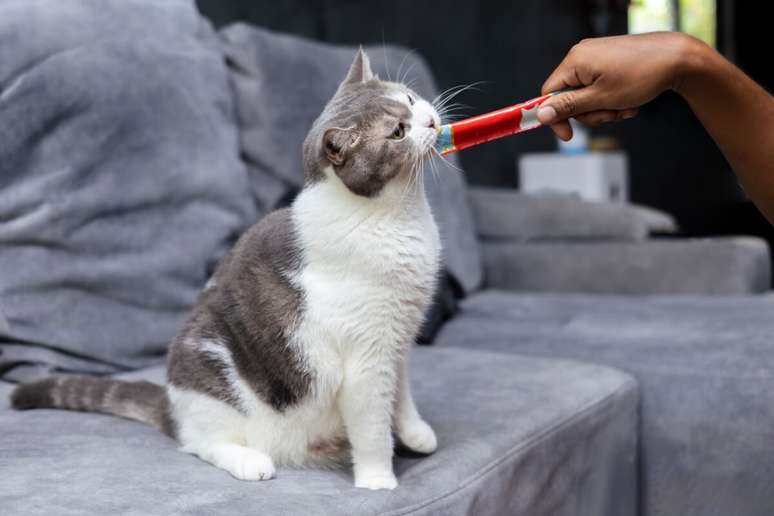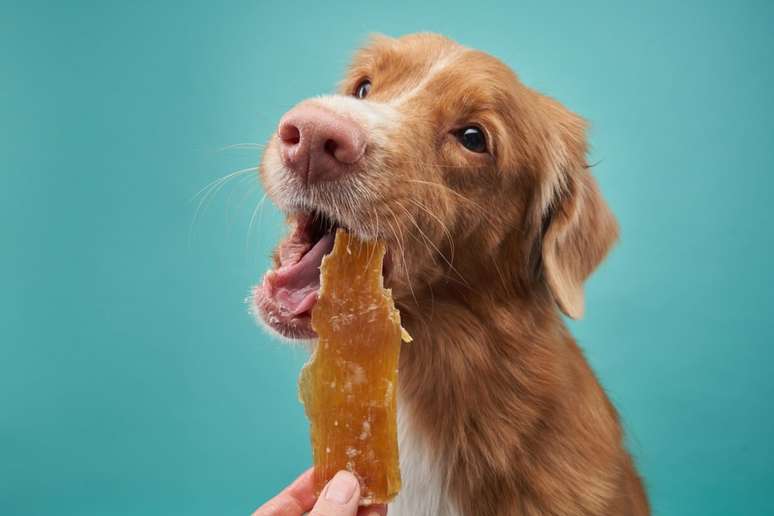They can be allies in the education and well-being of your pet, but they must be offered responsibly
Snacks are pet-specific foods or treats, often used as a reward during training, to reinforce positive behaviors, or simply as a way to please. As well as being attractive to pets Because of their flavor and texture, many also contain nutrients that contribute to health.
However, if administered inappropriately, they can cause problems such as obesity, allergic reactions, and digestive disorders. Therefore it is essential to understand how to propose them appropriately. See below for some tips!
1. Choose pet-specific treats
You snacks They must be developed specifically for pets, taking into account their nutritional needs and dietary restrictions. Foods intended for humans, such as chocolate, onions, and products sweetened with xylitol, can be highly toxic to humans. petscausing everything from digestive problems to more serious conditions, such as poisoning. Therefore, opting for specific snacks, in addition to being safe, guarantees that the animal receives morsels suited to its metabolism.
2. Avoid exaggerating with the quantity
Even healthy snacks can become harmful if given in excess. They should represent a maximum of 10% of the daily calories ingested by the animal, thus avoiding the risk of obesity and related problems, such as joint overload and cardiovascular complications. In this case, a veterinarian can help calculate the appropriate amount for each petconsidering factors such as weight, age and activity level.
3. Consider the pet’s specific needs
Each animal has its own particularities. Some may have allergies, intolerances or specific health conditions, such as diabetes or kidney problems, that require special attention when choosing snacks. So choose hypoallergenic options, developed for specific clinical situations or recommended by your veterinarian, ensuring that consumption does not compromise your dog’s health. well-being of pet.
4. Check the ingredients on the label
Reading the ingredients is essential to avoid health problems. Choose snacks that contain natural ingredients and avoid those with excessive chemical additives, such as artificial preservatives, colors and saturated fats. Additionally, products with high sodium content should also be avoided because they can cause kidney problems and high blood pressure.

5. Gradually introduce new snacks
The introduction of new snacks should be done gradually to observe the animal’s reaction. Small portions Initial tests help identify signs of allergy or intolerance, such as itching, diarrhea or vomiting. If you notice any symptoms, discontinue use immediately and seek veterinary advice.
6. Offer snacks at specific times
Treats should be offered on special occasions, such as during training or as a reward for good behavior. This prevents the pet from developing unwanted behaviors, such as being craving treats. To do this, establish a routine for these moments and maintain consistency in your offering.
7. Avoid offering snacks as a substitute for main food
Snacks are not a substitute diet balanced and complete food necessary for the animal’s health. They should be seen as an occasional complement and not as an alternative to the main food. Ensuring a balanced diet is essential to meeting the nutritional needs of pet.
8. Store snacks properly
Correct storage of snacks is essential to preserve their quality and safety. Store them in cool, dry places away from moisture, following the manufacturer’s instructions. Poorly stored treats can spoil and cause health problems for your pet.
Source: Terra
Ben Stock is a lifestyle journalist and author at Gossipify. He writes about topics such as health, wellness, travel, food and home decor. He provides practical advice and inspiration to improve well-being, keeps readers up to date with latest lifestyle news and trends, known for his engaging writing style, in-depth analysis and unique perspectives.








